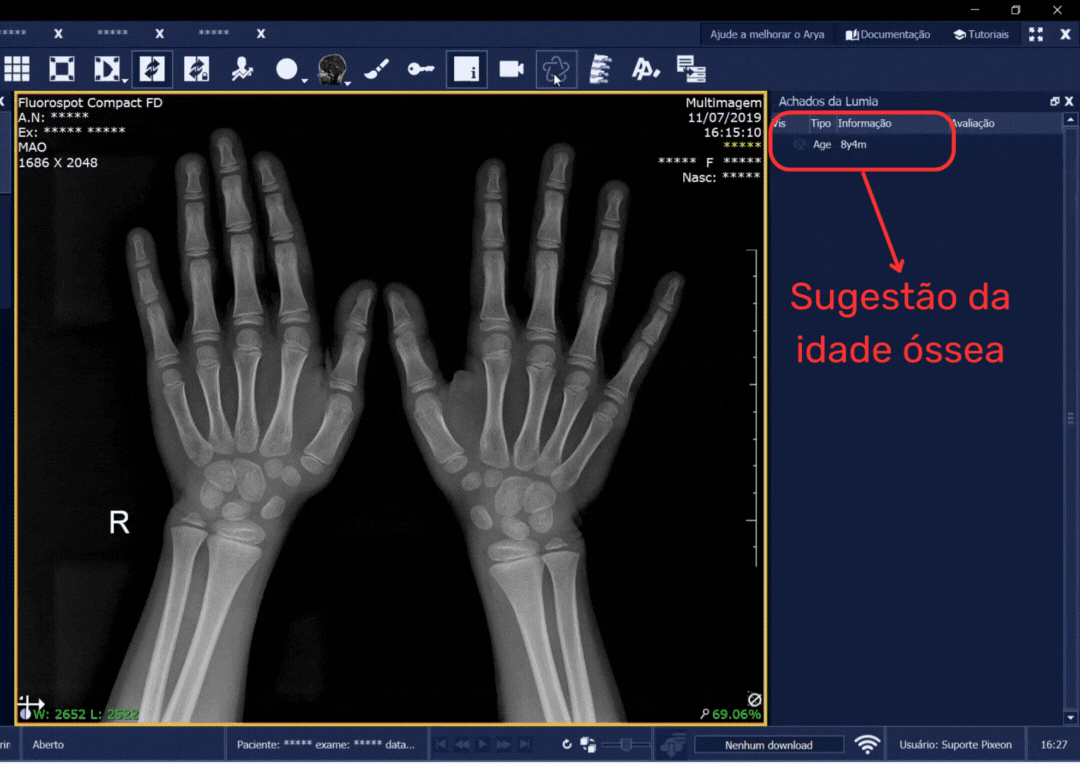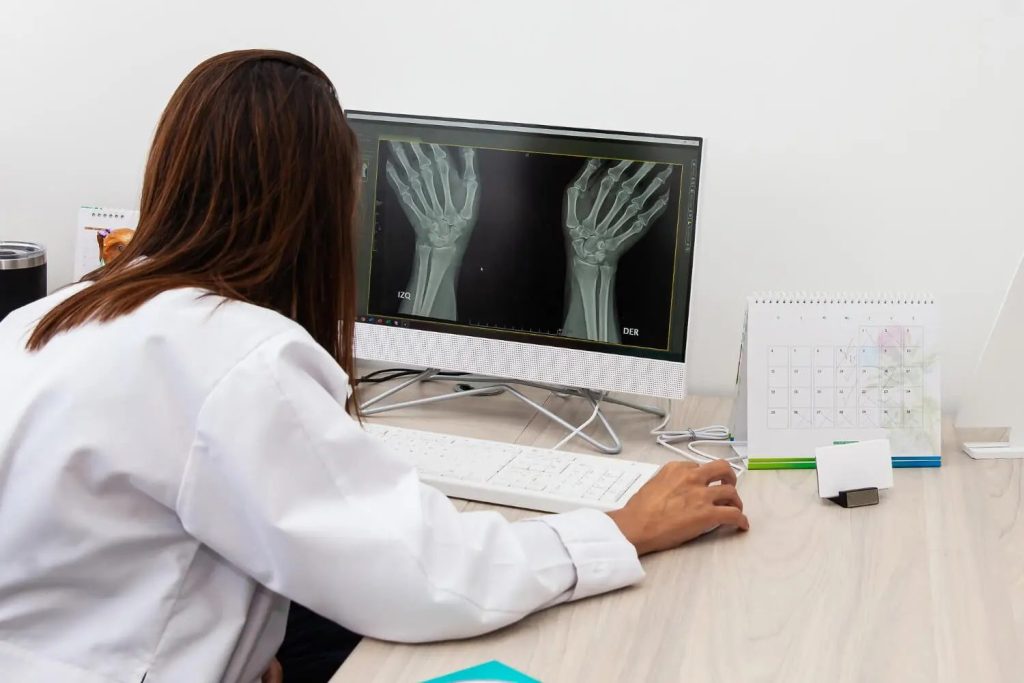The calculation of bone age using Artificial Intelligence (AI) is an innovation that accelerates diagnostic imaging, bringing precision and agility.
Using advanced algorithms, AI analyzes radiographic images to estimate patients’ bone age.
This technology automates processes that were previously performed manually, reducing human errors and delivering faster results.
Moreover, it allows radiologists to identify discrepancies earlier, improving clinical decisions.
In this article, understand how the bone age test is performed, the challenges of manual calculation, and how Artificial Intelligence acts in this process to enhance quality. Check it out!
What is bone age?
Bone age is a measure that evaluates the development and maturity of bones and is used to compare biological growth with a person’s chronological age.
Determined through imaging tests, bone age diagnoses delays or advancements in growth and guides medical treatments related to hormonal disorders, early puberty, and other conditions affecting development.
This analysis is especially important in children and adolescents, as it allows monitoring the impact of diseases or medical interventions on growth.
The difference between bone age and chronological age may indicate health problems or be used to predict future growth potential.
With technological advances such as the use of Artificial Intelligence, the assessment of bone age has become more accurate, facilitating quick and personalized diagnoses.
How is the bone age test performed?
The bone age test is performed through a radiographic exam of the hands and wrists, which shows the state of bone ossification.
The image is compared with bone development patterns, such as those presented in the Greulich-Pyle or Tanner-Whitehouse atlases.
These references allow for evaluating the degree of bone maturation, identifying whether there are discrepancies between bone age and chronological age.
The test is quick, painless, and is used to diagnose growth delays or advancements, assist in hormonal treatments, and evaluate conditions such as early puberty.
With technological advances, tools based on Artificial Intelligence offer automated and sophisticated analyses, ensuring greater accuracy and speed in diagnosis.
Challenges of manual bone age calculation
Calculating bone age presents challenges such as the subjectivity of human interpretation, which may vary among professionals, leading to inconsistencies.
The possibility of errors in the analysis of X-rays is also high, especially in complex cases.
Moreover, the process is time-consuming, as it requires specific time to compare with bone development patterns.
These factors directly affect the accuracy of the diagnosis, making it difficult to identify discrepancies across different age groups.
Artificial Intelligence in bone age calculation: how does it work?
Artificial Intelligence analyzes radiological images by identifying ossification patterns with high precision, using algorithms trained on large medical databases.
This innovation automatically compares the results with reference standards, ensuring faster and more consistent diagnoses.
By eliminating human subjectivity, AI reduces the need for manual adjustments, optimizing the process and increasing the accuracy of bone age evaluation.
Additionally, this technology can detect anomalies that go unnoticed with the traditional method. Therefore, it is possible to obtain earlier diagnoses, which aids in treating growth conditions.
How to calculate bone age in PACS Pixeon Aurora?
With the Artificial Intelligence features of PACS Pixeon Aurora, bone age is automatically calculated based on the scientific methodology that analyzes phalange measurements, considered the safest for this definition according to the Radiological Society of North America (RSNA).
Additionally, it is possible to visualize the region used as the basis for the calculation, which allows the radiologist to detail this area in the report if necessary:

After the automatic identification of bone age, the radiologist may agree or disagree with the AI analysis, which allows it to learn from this feedback and become increasingly accurate.
This innovation from Pixeon Aurora PACS stands out for simplifying the process, increasing productivity, and ensuring more accurate diagnoses.
About Pixeon
Pixeon is the company with the largest software portfolio for the healthcare market.
Our solutions serve hospitals, clinics, laboratories, and diagnostic imaging centers, covering both management (HIS, CIS, RIS, and LIS) and diagnostic processes (PACS and Laboratory Interface), ensuring high performance and top-tier management in healthcare institutions.
The HIS/CIS software for hospitals and clinics, Pixeon Smart, is a complete solution that integrates the entire institution into a single system. It is also certified with the highest level of digital maturity by SBIS (Brazilian Society of Health Informatics).
We already have over 3,000 clients in Brazil, Argentina, Uruguay, and Colombia, serving millions of patients annually through our platforms.
Want to know if Pixeon’s technologies offer everything you’ve always wanted for your hospital or clinic?
Request a commercial consultation and be amazed by everything our management system can provide!










